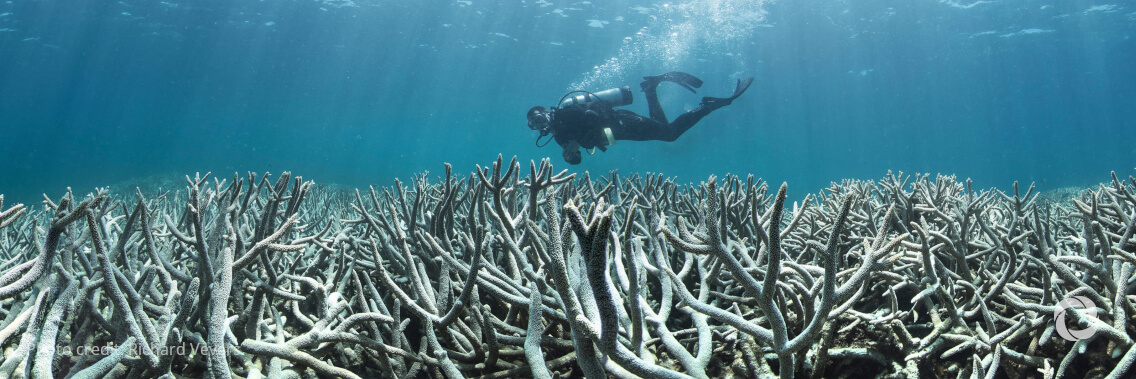The impact of ocean acidification on species in different parts of the world has been miscalculated, so far, and its impact in some cases over and in other cases underestimated, an analysis of 86 research papers by experts from around the world has revealed. Many of these earlier studies had not taken into account natural variation in baseline acidity levels across the world’s seas, leading to incorrect assumptions.
As the ocean absorbs some of the surplus carbon dioxides in the atmosphere, it gradually becomes more acidic, meaning that pH is decreasing, and animals need to cope with their changing environment. While studying the effect of ocean acidification, scientists have revealed varying responses among the same species. For example, with copepods, which are small crustaceans at the base of the food chain, two populations of the same species were shown to have contrasting responses to the same level of acidification: one being very sensitive and negatively impacted in terms of growth and survival, while the other showed a positive response.
The same species of an organism may exist all over the world – like us, humans – but because of contrasting environments, species evolve to thrive and survive in their given habitat. In the field of ocean acidification, this environmental variation adds another layer of detail to consider in research.
“If you use for an experiment, for example, two populations of the same species but from different regions and you ignore the environmental variation in which they live, you may produce different results. What is stress for one, maybe natural for the other,” said Sam Dupont, Senior Lecturer at the University of Gothenburg, Sweden, and a consultant with the IAEA Radioecology Laboratory in Monaco, which hosts the Ocean Acidification International Coordination Centre (OA-ICC). “There is a lot of conflicting data in ocean acidification studies because something was overlooked – it’s the fact that pH variability is different everywhere.”
Local impacts of ocean acidification
In a recent study, Dupont worked with marine scientists from Chile, China, and Sweden to analyze existing data available through the OA-ICC databases. The results of the analysis, which examined the effects of pH on biological traits – ingestion, respiration, growth, etc. – of coastal invertebrates, including crustaceans, corals, and sea urchins, were published in the journal Nature Climate Change in February.
“By conducting a global analysis, we have found that more than half of the selected studies may have underestimated the local impacts of future ocean acidification by exposing organisms to conditions that those organisms already experience in their geographic areas,” explained Cristian Vargas, lead author of the study and Professor at the University of Concepcion, Chile.
Vargas concluded that the impact of ocean acidification has been miscalculated because of the lack of information related to organisms’ habitats.
The international team reviewed 380 publications before analyzing the results of 86 independent ocean acidification studies that covered nine coastal regions. The latest study is a follow-up to a concept published in 2017 in the journal Nature Ecology & Evolution, which proposed an index to take into account the variability of environmental conditions to better understand the consequences of ocean acidification on species inhabiting different ecosystems.
The study also demonstrated the potential to produce new knowledge from resources already available.
“When the pandemic hit, the experiment shifted to rely on available data,” Dupont said. In 2020, the original plan was to collect mussels of the same species from around the world and expose them to a range of different pH levels to study the sensitivities of marine species. “But without being able to travel, we had no way to conduct those experiments,” Dupont said.
Instead, the researchers relied on existing data and literature to assess the validity of the concept they theorized in 2017, which proved to be reinforced by the data.
“The index we created allows us to better project what is going to happen in the future to marine organisms,” Dupont said. The same research methodology will be applied to study further effects of ocean acidification on other species.
Centre for training, data, and research
Since the late 1980s, 95 per cent of open ocean surface water has become more acidic, as there is more carbon dioxide released into the atmosphere by human activities for the ocean to absorb. The IAEA supports countries around the world in utilizing nuclear and nuclear-derived techniques to develop a science-based understanding of changes in the ocean. In response to growing concerns from the scientific community and governments regarding ocean acidification, the IAEA established the OA-ICC in 2012 at the IAEA Environment Laboratories in Monaco. Since then, the Centre has supported and organized 31 training courses and workshops on ocean acidification with more than 625 participants from 101 countries.
“The Centre hosts a well-structured capacity building program, and we realize that something is missing – this idea of utilizing resources of the OA-ICC to create new knowledge,” Dupont said. “That is extremely important in certain countries where the infrastructure is not stable, or laboratories and equipment are limited.” The OA-ICC’s databases are available for free and open access. The Centre plans to organize a training later this year, focused on the IAEA resources available to aid research.

